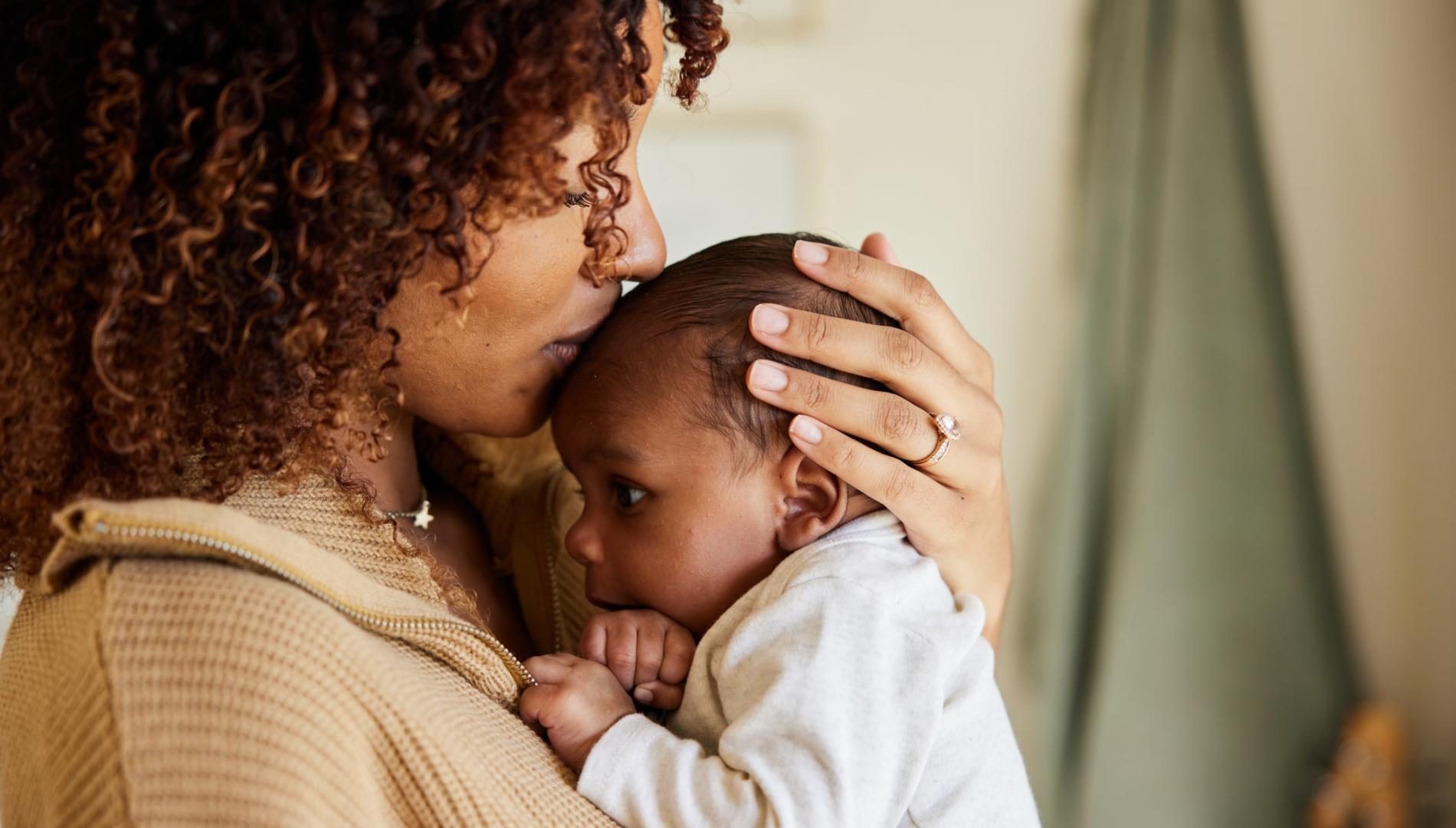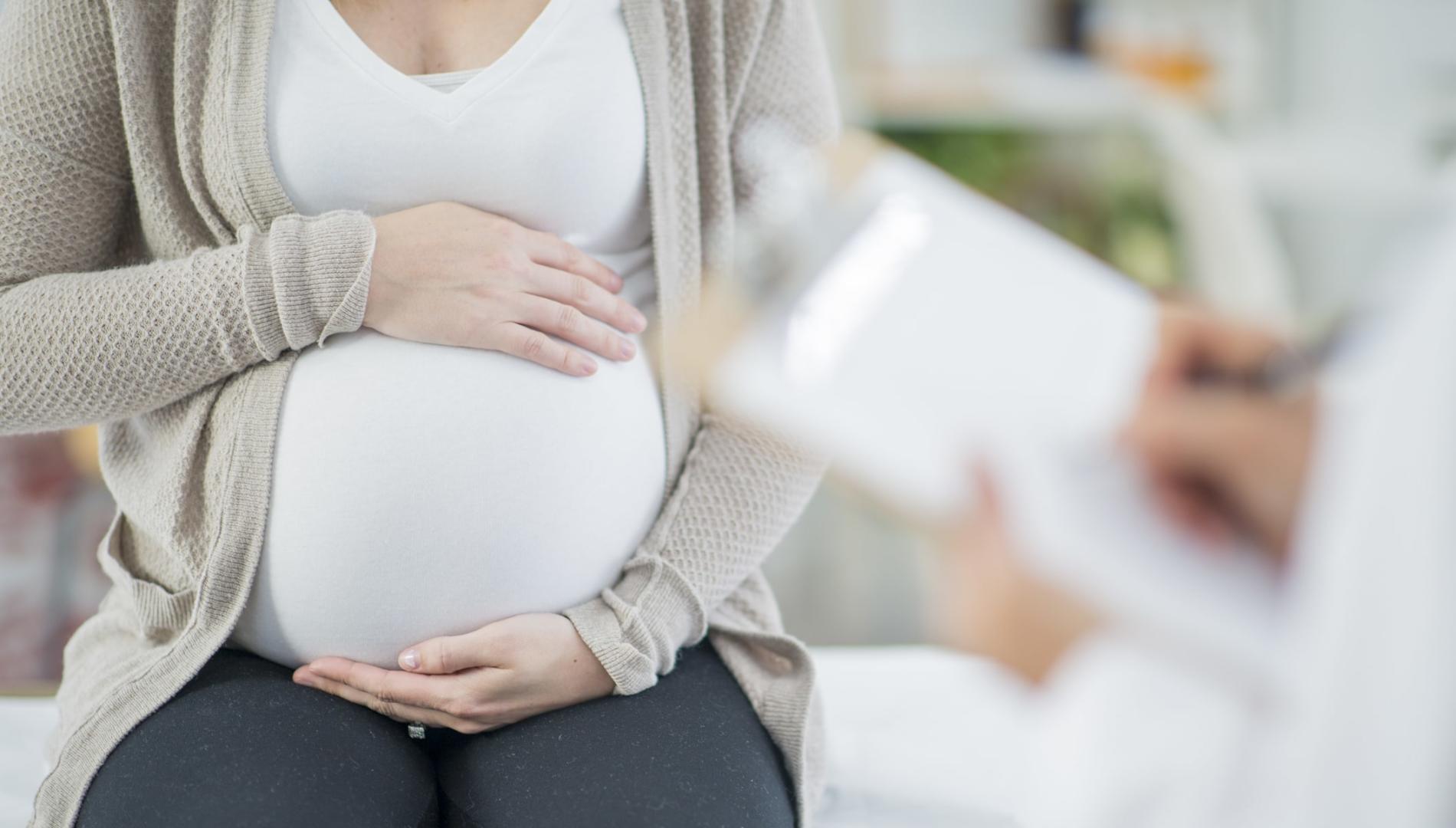When Ahlia went into labour with her second pregnancy, she arrived at the hospital ready to enact her planned water birth. However, she says the midwife on duty was dismissive and used stalling tactics to avoid supporting her through labour.
Ahlia recounts:
“I remember being in active labour, trying to understand the midwife’s perspective and expertise, whilst also being in immense pain and wishing she would listen to me, my previous birthing experience, and understanding of my own body."
As Ahlia’s labour quickly progressed, she was left alone and scared, without the woman-centred support and care needed for her to give birth safely.
The reason for this sub-par care? Ahlia is a larger-bodied woman.
Ahlia had previously felt fortunate to access a continuity of care model and had an amazing advocate in her midwife throughout her pregnancy. She had a safety plan in place for her birth, had received relevant consultant sign-off, and signed hospital release waivers for the planned water birth.
But all this hard work instantly disappeared due to one person's stigmatising way of working.
“I wasn’t seen as a person, I was seen as a risk, without any understanding of me as a person, my previous birthing experiences, or the planning that had occurred over the previous months of my pregnancy.”
Unfortunately, experiences like Ahlia’s are far too common. They are a form of weight stigma and discrimination – where people are excluded, shamed and treated as “less than” because they are living in a larger body.
Weight stigma is experienced by two-thirds of reproductive-aged women. It is extremely common in healthcare settings, such as maternity care, with about half of all women seeking maternity care living in a larger body.
Weight stigma includes stereotypes and prejudiced attitudes towards larger-bodied women. Examples of weight stigma include assuming negative traits about somebody based solely on their appearance, and not having appropriately-sized equipment available for healthcare provision.
In Ahlia’s case, the midwife disrespected her based on her body size, and the hospital did not support her desired birth plan.
Weight stigma is harmful
We know that women who experience weight stigma may go on to have poorer mental health. Experiencing weight stigma also induces an unhealthy stress response in the body, and is a key driver of healthcare disengagement, which can lead to poorer health outcomes.
For pregnant women, being stigmatised and discriminated against because of their body might also lead to harmful effects for their unborn child because of the impact it can have on pregnancy and birth outcomes.
Podcast: Weight stigma in healthcare
Often, people stigmatise and shame others about being larger-bodied because they think it will motivate the woman to lose weight. This is a myth that is entirely incorrect. Indeed, it does more harm than good.
Other times, weight stigma and discrimination is not intentional – we know that many midwives strive to practise safe, woman-centred care.
Dr Briony Hill, Senior Research Fellow and Australian Research Council (ARC) DECRA Fellow in the Health and Social Care Unit at Monash University, is striving to make maternity care better for larger-bodied women.
Dr Hill and a team of passionate clinicians and researchers set out to prioritise the voices of people such as Ahlia, who have experienced weight stigma and discrimination when they’ve sought care for their pregnancy.
At the same time, listening to the expertise of people delivering maternity care, such as midwives and obstetricians, can ensure any attempts to change how care is provided are more successful.

With this in mind, Dr Hill and her team brought together the voices and experiences of women who have experienced weight stigma in maternity care and clinicians who deliver maternity care.
They worked together to co-design resources to reduce weight stigma in maternity care, then evaluated the resources’ relevance to practice, strengths and areas for improvement. The research was recently published in BMC Pregnancy and Childbirth.
Bringing together the voices of those impacted by the research creates a shared goal, builds trust, and acknowledges the value of the experiences of those involved.
Over five phases of co-design, the team collaboratively developed a series of resources that can be used in antenatal care to help combat weight stigma. Women and midwives came together, working collectively and respectfully across three workshops to generate ideas and create solutions.
Firstly, the sky was the limit as out-of-the-box ideas were discussed. Secondly, strategies were developed for each idea addressing who, what, when, where, why and how they could work. Thirdly, the group selected a shortlist of ideas that were new, likely to be effective, and could feasibly be implemented in practice.
Throughout this process, the researchers supported the co-designers with synthesis of their ideas and a platform to share, discuss, and refine.
Once the ideas were solidified, the research team transformed them into resources. The final step was to interview midwives and obstetricians to evaluate the resources for their strengths, areas for improvement, and relevance and feasibility in practice.
The result was a set of resources relevant to maternity care because they were able to be easily integrated into practice, acted as constant reminders to be size-friendly, and filled midwives’ and obstetricians’ knowledge gaps about weight stigma.
The clinicians interviewed were enthusiastic about the resources and offered suggestions for how they could be rolled out broadly into health services.
One midwife noted:
“I do think that getting champions within a workplace that are well-respected, and that are clinicians of different backgrounds would be helpful, you know, to advocate for a shift in the way that we approach these things.”
The participants suggested that this work should be part of broader activities to address policy change in maternity healthcare to ensure larger-bodied women are not discriminated against before they even walk through the door. This sentiment is strongly supported by Dr Hill and her team.
“We have created a policy brief to put a call out to health services that there are simple actions they can take to begin addressing weight stigma in maternity care,” Dr Hill said.
Ahlia felt her participation in the study was a positive step forward.
“It is so heartening to have been able to be part of the solution. Experiences like mine make you feel powerless, alone and insignificant, as not only a person, but as a mother also.
“To be able to use my unfortunate experience as a catalyst for change is one I will always be grateful for. I’m so grateful for the work of Dr Hill and her ongoing focus to ensure better health outcomes for larger-bodied women.”
This work is also part of a large body of research being led by Dr Hill, funded by the ARC and NHMRC. Dr Hill’s research aims to understand and address weight stigma for women across the reproductive years from the perspectives of women, the community, healthcare, and policy.
This study was supported by a Seeding Grant from The Australian Prevention Partnership Centre. The Australian Prevention Partnership Centre was supported through the NHMRC partnership centres grant scheme (Grant ID: GNT9100003) with the Australian Government Department of Health, ACT Health, Cancer Council Australia, NSW Ministry of Health, Wellbeing SA, Tasmanian Department of Health, and VicHealth. It is administered by the Sax Institute. Dr Hill was supported by an Australian Research Council Discovery Early Career Researcher Award (DE230100704).








